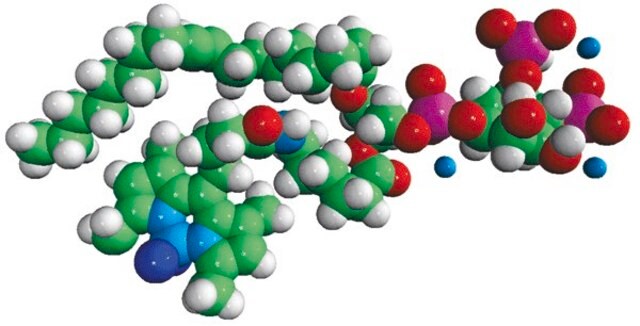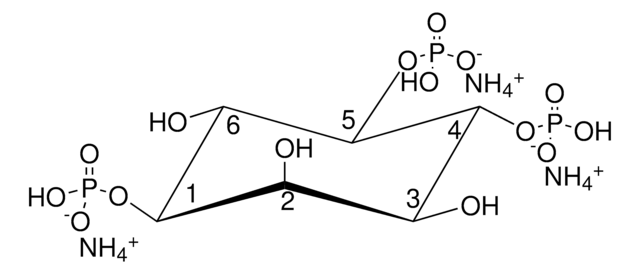850186P
Avanti
08:0 PI(3,4,5)P3
1,2-dioctanoyl-sn-glycero-3-phospho-(1′-myo-inositol-3′,4′,5′-trisphosphate) (ammonium salt), powder
Sinónimos:
PIP3[3′,4′,5′](8:0/8:0); 110667
About This Item
Productos recomendados
Ensayo
>99% (TLC)
Formulario
powder
envase
pkg of 1 × 100 μg (with stopper and crimp cap (850186P-100ug))
pkg of 1 × 500 μg (with stopper and crimp cap (850186P-500ug))
fabricante / nombre comercial
Avanti Research™ - A Croda Brand 850186P
tipo de lípido
phospholipids
cardiolipins
Condiciones de envío
dry ice
temp. de almacenamiento
−20°C
cadena SMILES
[H][C@@](COP(O[C@H]1[C@H](O)[C@@H](OP([O-])(O)=O)[C@H](OP(O)([O-])=O)[C@@H](OP(O)([O-])=O)[C@H]1O)([O-])=O)(OC(CCCCCCC)=O)COC(CCCCCCC)=O.[NH4+].[NH4+].[NH4+].[NH4+]
Descripción general
Aplicación
Acciones bioquímicas o fisiológicas
Envase
Información legal
Código de clase de almacenamiento
11 - Combustible Solids
Elija entre una de las versiones más recientes:
Certificados de análisis (COA)
It looks like we've run into a problem, but you can still download Certificates of Analysis from our Documentos section.
Si necesita más asistencia, póngase en contacto con Atención al cliente
¿Ya tiene este producto?
Encuentre la documentación para los productos que ha comprado recientemente en la Biblioteca de documentos.
Los clientes también vieron
Nuestro equipo de científicos tiene experiencia en todas las áreas de investigación: Ciencias de la vida, Ciencia de los materiales, Síntesis química, Cromatografía, Analítica y muchas otras.
Póngase en contacto con el Servicio técnico









